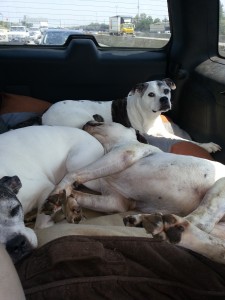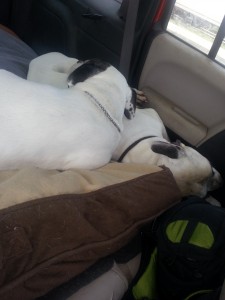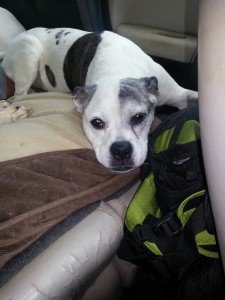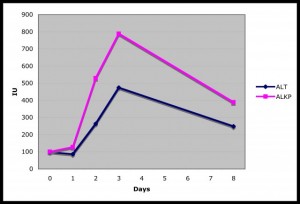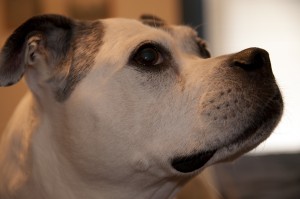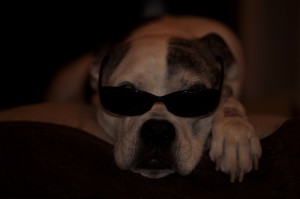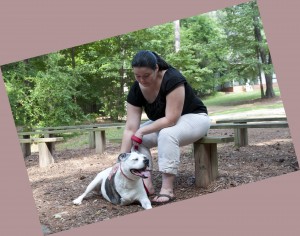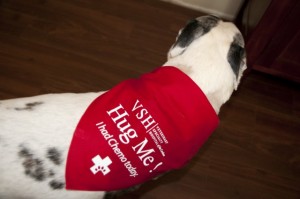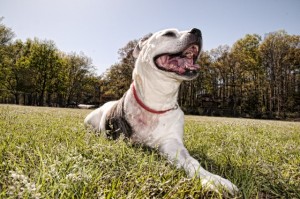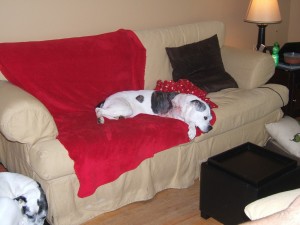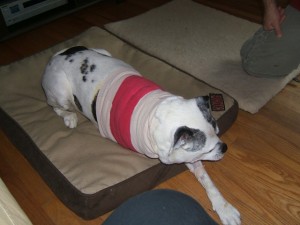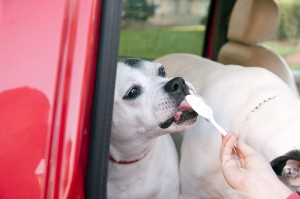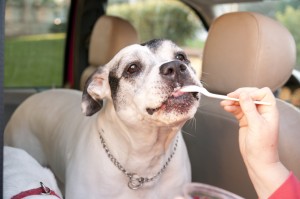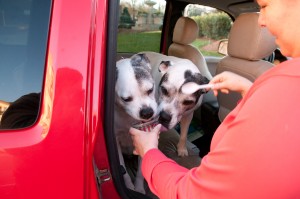It’s a lazy Sunday (delayed post) here at the Ruano Ranch. Our ride back to Raleigh from PA was mostly uneventful other than some heavy traffic between D.C. and Richmond, VA. It’s a good thing I replaced the radiator cooling fan on the Jeep before we left for PA on Monday; things would have gotten a little steamy in all that stop-and-go.
Sasha did very well during her second treatment in the Mason Bone Cancer Study at The School of Veterinary Medicine at the University of Pennsylvania. Shortly after arriving, a very nice gentleman named Alex (student/intern??) escorted us back to one of the examination rooms. He gave Sasha a quick once over, and then went to get Dr. Mason. When Dr. Mason walked into the room, it was like a reunion of old friends between her and Sasha. Well, I guess that’s exactly what it was. People say that dogs cannot be fooled with false expression of feelings – that they see past affectation and discern the truth behind the smile. I believe this to be true, and that is how I know that Dr. Mason is as good a person as I think she is – Sasha tells me so.
Sasha reacted differently to the L. Monocytogenes vaccine the second time round. She developed a fever during her first treatment, and we expected to see the same thing happen this time, but Sasha’s temperature stayed at normal levels for her entire stay at UPenn. This was a little disappointing since a fever is a sure sign that Sasha’s immune system is reacting to the Listeria bacteria. Dr. Mason explained to Liliana and me, however, that lack of a fever is not necessarily a sign of lack of efficacy of the vaccine. Instead of developing a fever this time, Sasha became nauseous and vomited. Although no one enjoys seeing Sasha suffer, her nausea was good evidence that the vaccine did have an effect.
Prior to administration of the vaccine, Dr. Mason had blood drawn from Sasha to evaluate her red and white blood cell counts, and her liver and kidney function values along with electrolytes and blood proteins. Sasha’s blood work came back normal. All of her numbers looked good, including her liver values which were of some concern after her first visit to UPenn. Listeria is primarily sequestered in the liver and to a lesser extent, in the spleen. It causes damage to the liver (reparable) and causes liver enzymes to rise. We will be taking Sasha to our local veterinarian for bloodwork on Wednesday to make sure that everything still looks good. In the meantime, we will be giving Sasha Denosyl (prescribed by Dr. Mason) for her liver. Denosyl contains Glutathione, a powerful antioxidant, which aids in liver detoxification by making toxins more soluble so that they can more easily be excreted from the body.
Sasha is relaxing beside me on her bed as I write this update. She will go for a walk later, or maybe play with her Kong flying disk in the back yard. Sometime during the next two weeks, we are planning on taking her swimming at a pond in Youngsville, NC. It’s pretty cool because people can rent the entire pond by the half hour, and the cost is reasonable. Swimming is one of Sasha’s favorite activities, so I have a feeling that we will be visiting the pond on a regular basis.
Thanks for reading about Sasha’s progress in the Mason Bone Cancer Study. Be sure to come back for more updates on her and the other dogs in the study!
